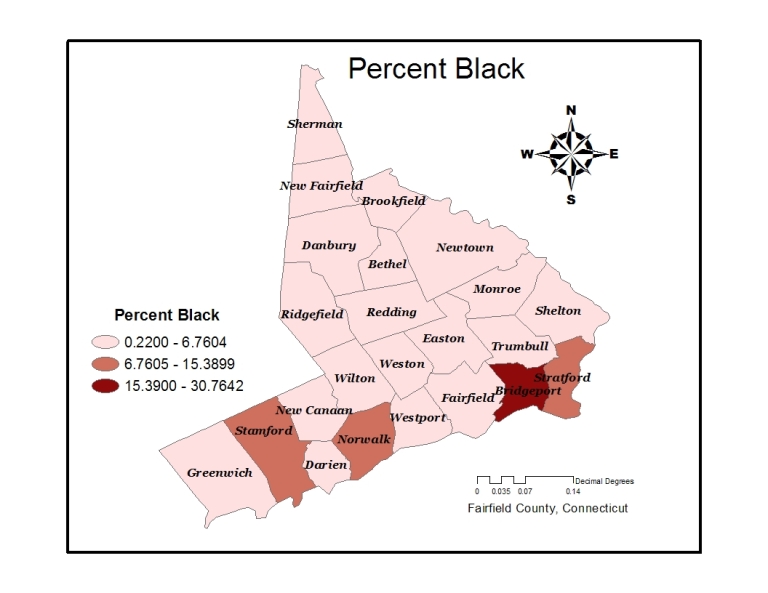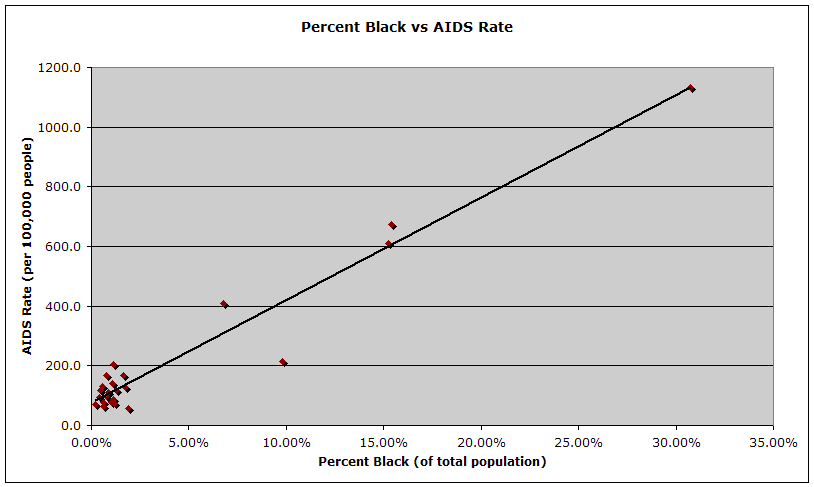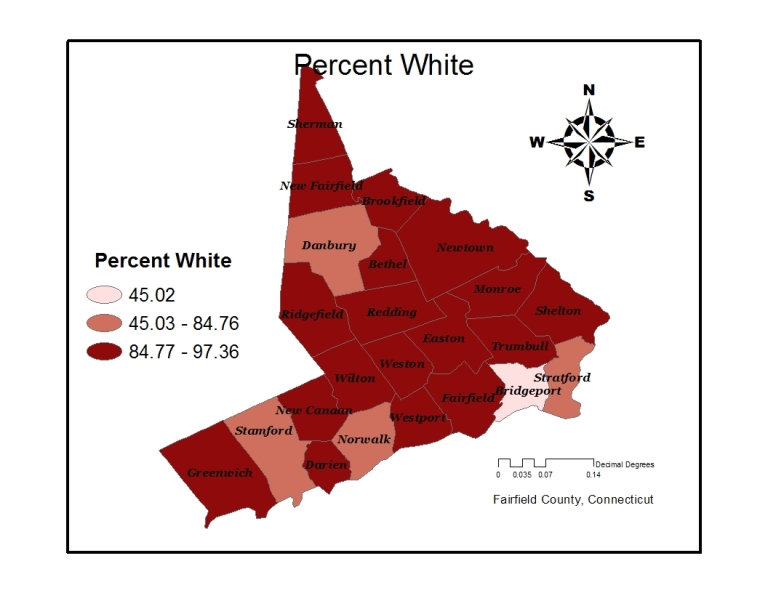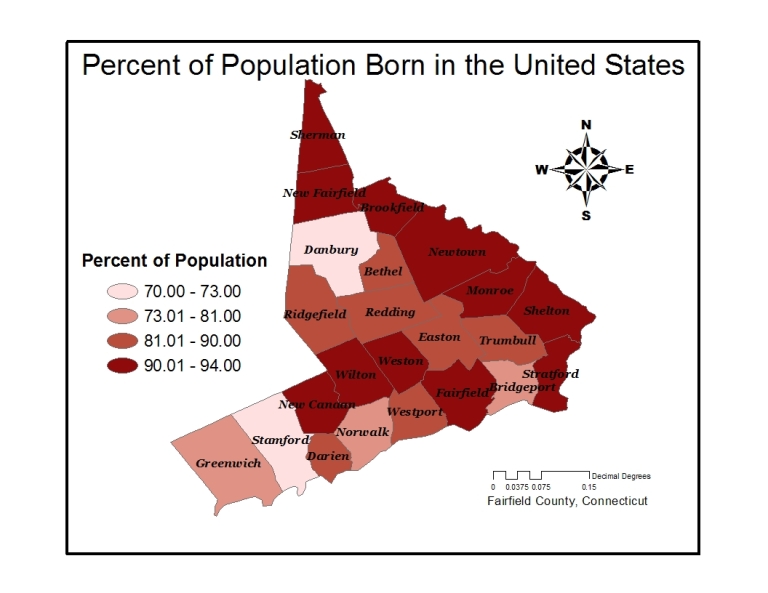RACE AND NATIONALITY
I. Blacks
As supported by both sets of data and stories in the media, race is certainly an important factor determining where AIDS strikes. At the beginning of the epidemic, whites composed the majority of AIDS cases, though the trend has shifted to include many more minorities, particularly African Americans and Hispanics.
According to the article “HIV/AIDS and the Black Church: What Are the Barriers to Prevention Services?”, “Although, blacks make up approximately 12% of the U.S. population, they accounted for half of all new HIV infections reported in 2003.” (Smith, 1682) When presented with statistics such as these, the sensational correlation coefficient of .97 relating percent black to AIDS rate seems more easily digestible. Taken without Bridgeport, an outlier where just over 30% of the population is black, the correlation drops to .92. In sum, the data in Fairfield County seems to generally support the notion that as percent black rises, so does the rate of AIDS cases, a trend that is also occurring nationally. (Table 1)


II. Whites
Following much of the same logic regarding the relationship between percent black and AIDS rates, it is understandable that percent white of the population should also have a strong, but negative, correlation with the rates. In sum, it is not surprising that the correlation coefficient is -.978 with Bridgeport and -.946 without. As the concentration of whites in the population of the town grows higher, there are fewer AIDS cases to be found. Additionally, while Bridgeport seems to follow the trend on the scatter plot, it is certainly an outlier, in that only 45% of the town population is white, while many other towns have white percentages ranging in the nineties. On the shaded graph of the area, one gains a picture of how drastically different Bridgeport is in this regard.
Somewhat puzzling, however, is the percentage of cumulative AIDS cases whites made up in my area. Upon first glance, there seems to be a discrepancy between the 37.3% of cumulative AIDS cases whites compose (only about 2% lower than the black proportion) and the strong, negative correlation between percent white and AIDS cases. This phenomenon can be explained in two ways. To begin, AIDS cases have declined since 1980 (from 41.5% to 22.4% in 2006). (“Fairfield Co. AIDS Cases by Year of Report…”) Secondly, there may be another aspect the white population brings to the table- the MSM (male who have sex with men) AIDS cases, which will be discussed later in this paper. (Table 2)


III. Hispanics
As the Hispanic group is commonly neglected in the coverage of the AIDS epidemic, though, granted, they only made up roughly 16% of cases nationally in 2005 (CDC, “Basic Statistics”), one might easily overlook their impact on the number of AIDS cases in Fairfield County as well. Additionally, Hispanics compose approximately 12% of the population of Fairfield County and, in many towns (such as Wilton and New Canaan) make up less than 2%. This ethnic group, however, accounts for 22.9% of the cumulative AIDS cases in the county since 1980. How can this be? To start, AIDS rates within this group have been on the rise since 1980. Between 1980 and 1994, Hispanics made up 17.4% of AIDS cases; this percentage rose to a surprising 43.5% in 2006. (“Fairfield Co. AIDS Cases by Year of Report…”).
In this light, the extremely strong correlation between percent Hispanic and AIDS rates in Fairfield County seems perfectly understandable, while it might not upon first glance, with knowledge of national, but not local, AIDS data. The correlation coefficient relating the two sets of data was .97 and remained almost equally as high when Bridgeport was removed from the data (.94). This data set reveals a significant relationship wherein AIDS cases rise with the percent Hispanic. (Table 3)

IV. Nationality
Nationality may also be a contributing factor to the number of AIDS cases in Fairfield County, Connecticut, as the correlation coefficient of -.74 suggests. This coefficient hints at a relatively strong, negative relationship between the percent native born of the population and the respective AIDS rate for that town. Moreover, taking away Bridgeport as an outlier results in a stronger correlation (of about -.86). Removing Bridgeport is appropriate here because its AIDS rate is substantially higher than the rest of Fairfield County but there is a greater native population than towns such as Danbury, Norwalk and Stamford. However, it is important to note that: 1) the correlation is not as strong as others calculated in this paper and 2) as the percentage of native born ranges only from 70.38% (in Stamford) to 92.93% (in Monroe), the population of Fairfield County is relatively homogeneous with respect to place of birth. In sum, it is difficult to say with much conviction that the correlation between the percent native born and the rate of cases is truly noteworthy. (Table 4)

